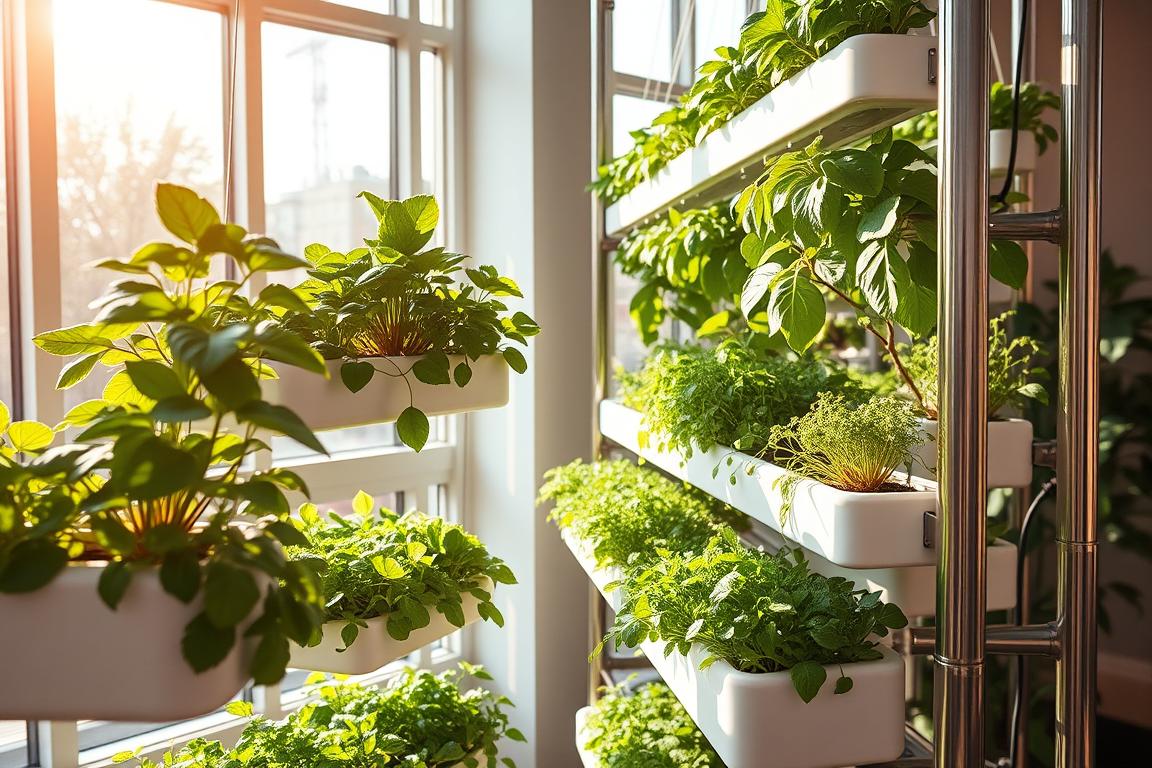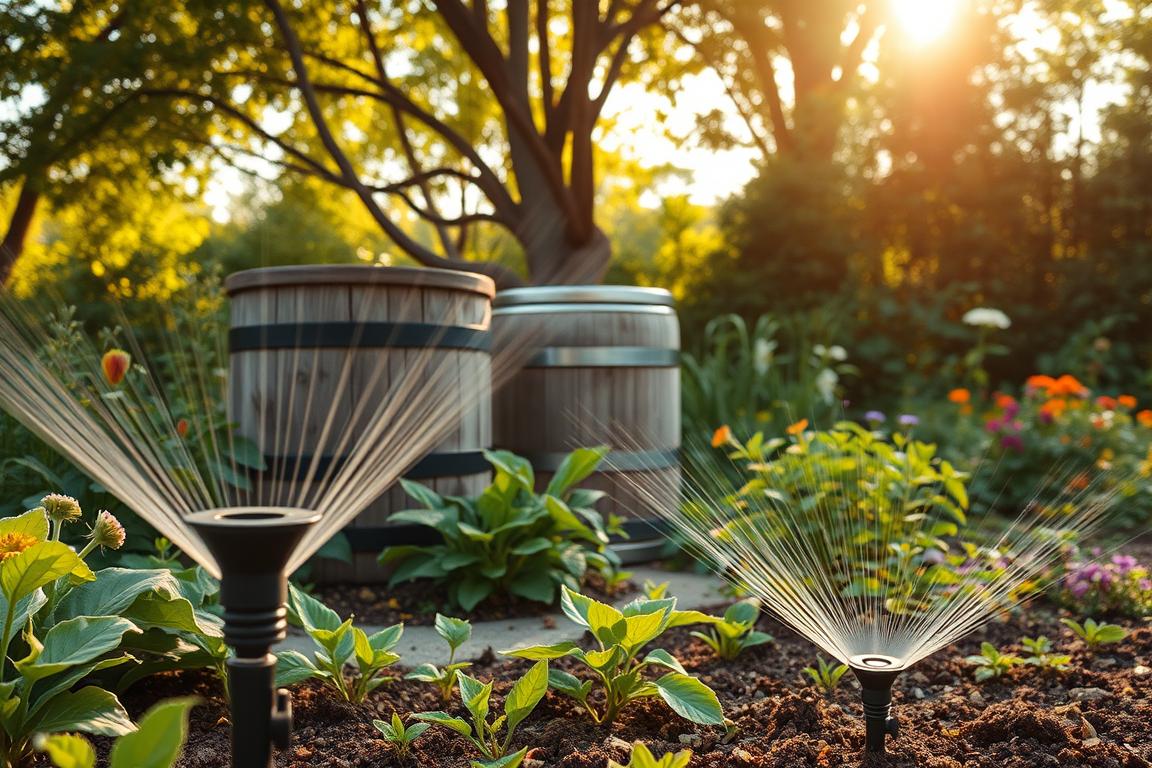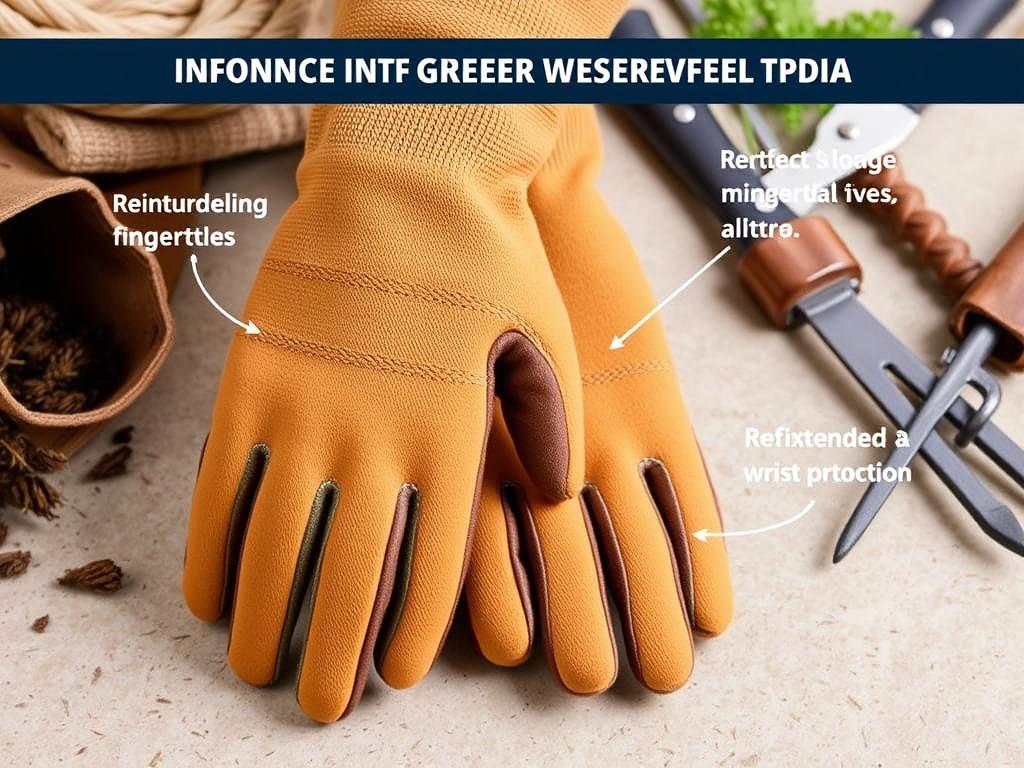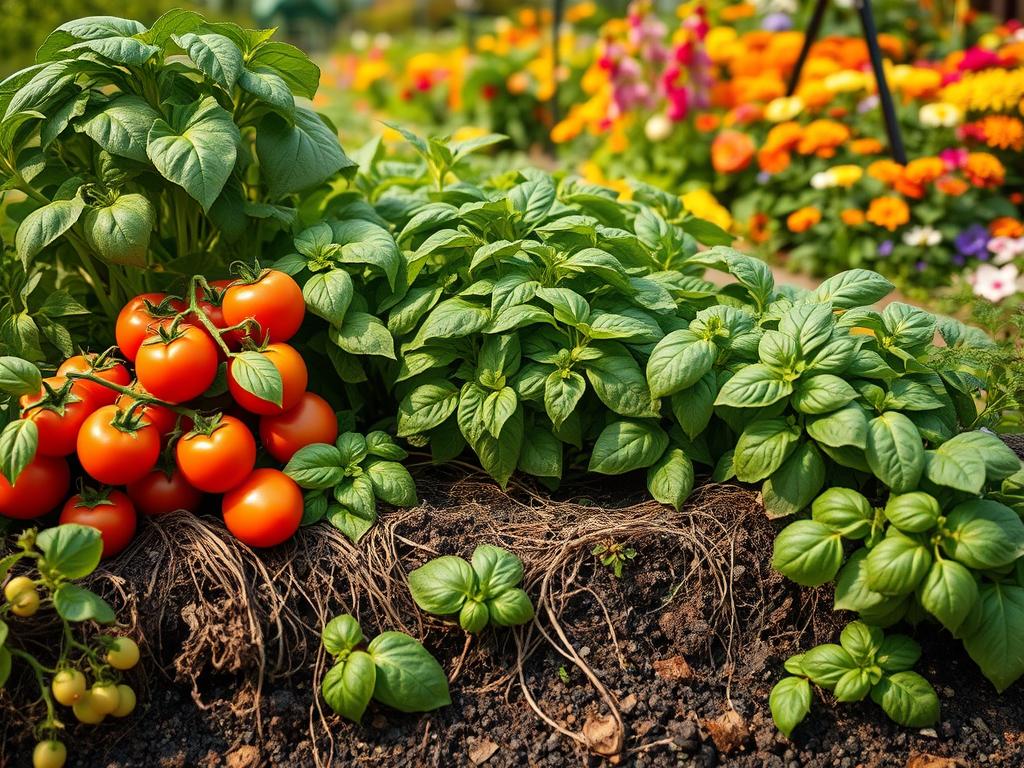Successful indoor gardening is more than just watering your plants. You need to think about drainage, soil, light, and maintenance. Knowing these details can turn a plant graveyard into a lush oasis.
If you love plants or are just starting, this guide has you covered. We’ll share tips on choosing the right plants and caring for them. You’ll learn how to keep your indoor plants healthy and happy.
For beginners, buying plants from reputable garden centers is best. They offer valuable advice and support. With the right knowledge and care, you can create a beautiful indoor oasis that adds joy to your home.
Understanding the Fundamentals of Plant Selection
Choosing the right plants for your home can make a big difference. It’s all about knowing what different plants need and matching them to your space. Think about light, humidity, and how much care you can give. This way, you can pick plants that are easy to care for and will make your home greener.
Choosing Plants Based on Light Conditions
Light is a key factor when picking houseplants. Some, like snake plants and ZZ plants, do well in low light. Others, like Philodendrons, Rubber plants, and Calatheas, need more light. Make sure to pick plants that fit your home’s light to help them grow well.
Assessing Plant Health Before Purchase
When buying plants, check them carefully before you take them home. Look for signs of health, like new growth and bright leaves. Stay away from plants with fungal damage or other problems. A healthy plant will do better in your care and bring joy for a long time.
Best Plants for Beginners
For beginners, start with easy plants. Snake plants, ZZ plants, Philodendrons, Rubber plants, and Calatheas are great. They can handle different light levels and are simple to care for. These plants are also good at cleaning the air, as shown in the NASA Clean Air Study.
“Houseplants can transform a space, bringing in natural beauty and even helping to purify the air we breathe. By selecting the right plants for your lifestyle and environment, you can create a thriving indoor oasis that adds a touch of green to your home.”
– Maria Failla, Founder of Bloom and Grow Radio
The Secret to Thriving Houseplants (Hint: It's Not Just Water!)
Keeping houseplants healthy is more than just watering them. It’s about knowing their needs, like sunlight, soil, and when to feed them. By focusing on these, you can help your plants thrive.
Start by picking the right plant for your home. Think about how much sunlight it needs. Some plants love bright light, while others do better in the shade. Also, choose soil that drains well to avoid root rot from too much water.
Feeding your plants with a gentle fertilizer is key. Do this every 4-6 weeks when they’re growing. This keeps them strong and healthy.
- Know each plant’s light and soil needs.
- Make sure the soil drains well to avoid root rot.
- Feed your plants regularly with a gentle fertilizer.
- Watch for pests and deal with them quickly.
By paying attention to these details, you can make your houseplants thrive. They’ll add beauty and life to your home. With the right care, they’ll grow strong and vibrant.
| Characteristic | Recommendation |
|---|---|
| Light Requirements | Consider each plant’s specific needs, ranging from bright, direct light to low-light conditions. |
| Soil Quality | Use well-draining, fast-drying soil mixes to prevent overwatering and root rot. |
| Fertilization | Feed plants with a gentle liquid fertilizer every 4-6 weeks during the growing season. |
| Pest Control | Monitor plants regularly and address any pest issues promptly to maintain their health. |
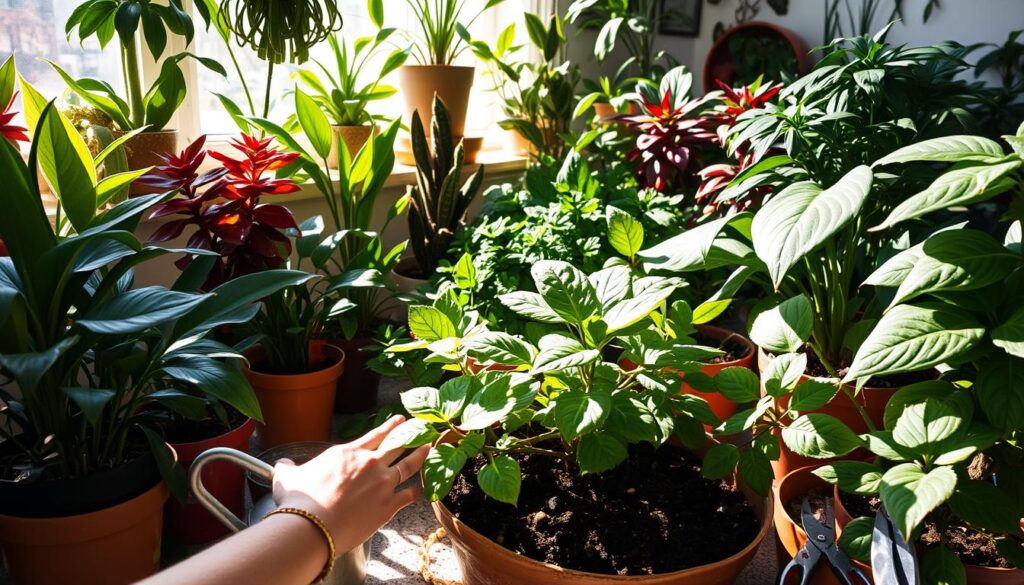
“The key to thriving houseplants lies in understanding their individual needs and providing the right conditions for them to flourish.”
Mastering the Art of Watering and Soil Care
Proper watering and soil care are key to keeping houseplants healthy. Knowing what each plant needs is crucial for their well-being. Let’s explore the secrets of watering and soil care for your indoor garden.
Understanding Different Soil Types
Not all soils are the same for houseplants. Some plants need well-draining soil, while others like it moist. Succulents need sandy soil, but ferns and peace lilies like it moist.
It’s important to know what your plants need. This prevents problems like root rot or nutrient deficiencies.
Proper Watering Techniques
Watering frequency and method are critical. Water when the top inch of soil is dry. Use lukewarm water to avoid shocking the roots.
Water at the base of the plant, not the leaves, to avoid fungal infections and pests. Adjust your watering based on plant type, temperature, and humidity.
Signs of Over and Under-watering
- Overwatering: Wilting, yellow leaves, and root rot.
- Underwatering: Droopy, dry leaves, slow growth.
Pay attention to your plants’ signs. This helps you fix watering issues before they get worse. Adjusting your watering can greatly improve your plants’ health.
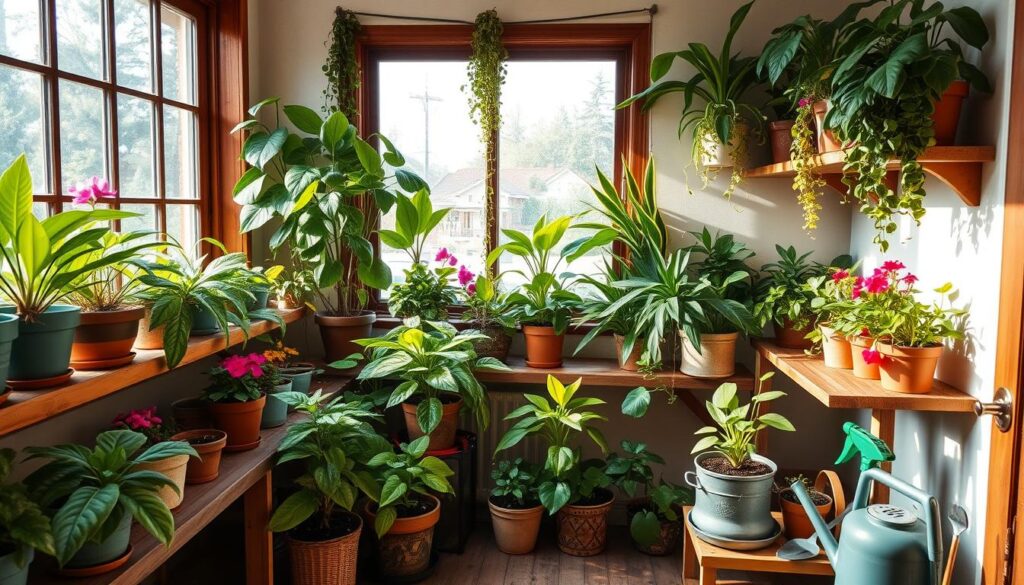
“Watering your plants properly is one of the most important aspects of houseplant care. Get it right, and your plants will thank you with lush, vibrant growth.”
By understanding your plants’ soil and watering needs, you’ll master plant maintenance. Enjoy a thriving indoor oasis.
Light Requirements and Placement Strategies
Sunlight is crucial for houseplants to grow well. Each plant needs a specific amount of light, based on where it grows naturally. Knowing these needs helps you create a beautiful indoor garden.
Plants that love the sun, like succulents and begonias, need bright spots. They should get 6 or more hours of sunlight a day. Plants that prefer shade, such as ferns, do best in less sunny areas.
As plants grow, they might need more light. So, you’ll need to move them to sunnier spots. Think about your windows and how much light they get at different times of the day.
| Window Direction | Light Intensity | Best Suited Plants |
|---|---|---|
| North-facing | Low light | Low-light houseplants |
| South-facing | Bright, direct sunlight | High-light houseplants |
| East-facing | Medium light, bright mornings | Medium-light houseplants |
| West-facing | Medium to high light, late afternoon sun | Medium to high-light houseplants |
For your plants to thrive, match their light needs with the right spot in your home. By choosing the right place for your plants, you can make a lush, natural oasis. This oasis will add joy and beauty to your space.
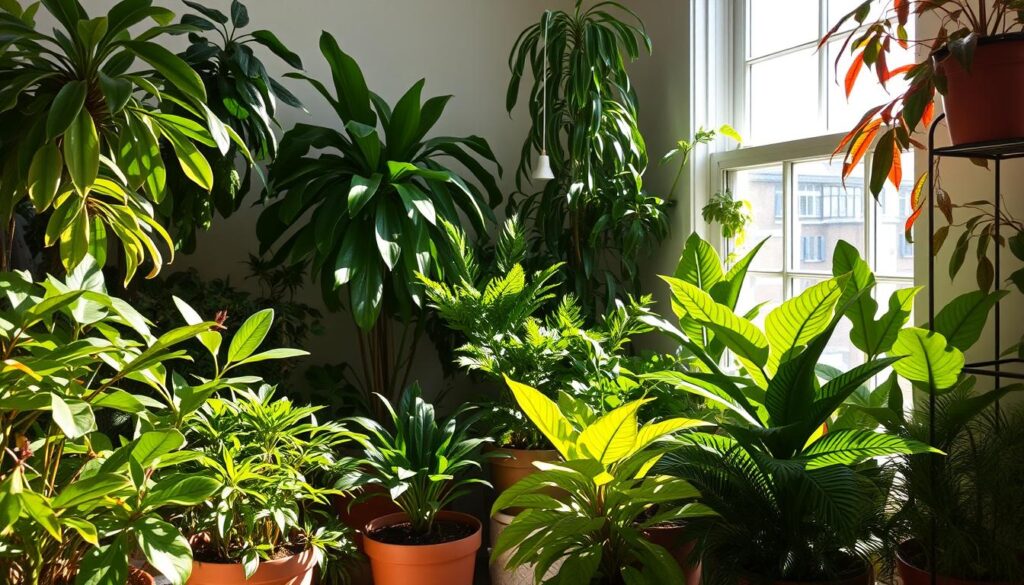
Essential Plant Maintenance and Feeding
Keeping your indoor plants healthy is more than just watering them. You need to know about fertilizing and pruning. Each plant is different, so understanding their needs is key to their growth.
Fertilization Schedule and Methods
Feeding your plants the right nutrients is crucial. Fertilize them in spring and summer when they’re growing fast. Use a balanced fertilizer that matches your plant’s needs. Follow the label’s instructions to fertilize every two to four weeks.
Pruning and Cleaning Techniques
Pruning and cleaning are important for your plants’ health and look. Remove dead or damaged leaves to encourage new growth. Use sharp tools to make clean cuts. Also, clean the leaves to help them absorb light better.
Pest Prevention and Management
Watch out for pests in your indoor garden. Quarantine new plants to stop pests from spreading. Check your plants often for signs of pests. If you find any, use safe methods to get rid of them.
By following these care tips, your houseplants will thrive. Enjoy your beautiful, healthy plants for years to come.
| Maintenance Task | Frequency | Benefits |
|---|---|---|
| Fertilization | Every 2-4 weeks during active growth | Provides essential nutrients for plant health and vigor |
| Pruning | As needed, to remove dead or damaged leaves | Promotes new growth and maintains a tidy appearance |
| Leaf Cleaning | Monthly or as needed | Improves light absorption and overall plant health |
| Pest Inspection | Weekly or bi-weekly | Identifies and addresses pest issues before they escalate |
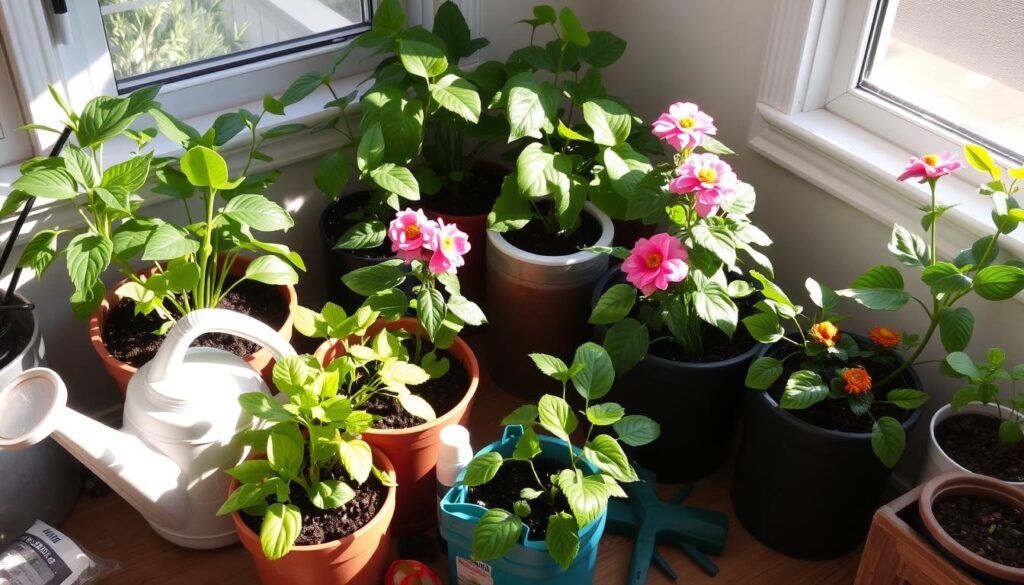
“Boosting understanding of proper plant care significantly increases confidence in nurturing indoor plants to thrive.” – Anil Chandrakumar, Horticulturalist
Conclusion
Successful houseplant growth hacks start with knowing what each plant needs. This includes the right light, water, soil, and care. Begin with simple plants and grow your botanical decor collection as you learn more. Plants not only make your home look good but also boost your mood and health.
With time and regular care, anyone can create a beautiful urban horticulture space. Adjusting how you water, using the best soil, and ensuring the right light are key. This way, you can make your home greenery lush and improve your home’s feel and function.
Whether you’re new to gardening or have experience, growing houseplants is fulfilling. Learn what each plant needs and adjust your care. This will help you grow a lively and healthy indoor garden that brings happiness and peace to your home. With these tips and a bit of green thumb, your plants will flourish, adding life and energy to your space.



